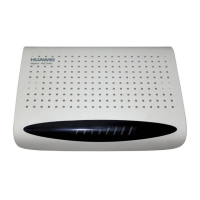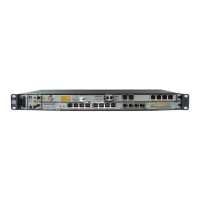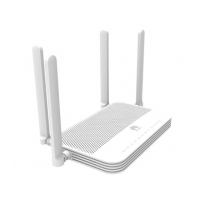Battery Leakage
● The leaked electrolyte is a colorless viscous liquid that may evaporate rapidly
and is ammable, turning into white salt residues. The electrolyte has a
pungent smell and is corrosive, irritating to eyes and skin. Avoid contact with it.
● When handling chemical leakage incidents, professional maintenance personnel
and reghters must wear necessary protective equipment such as air-purifying
respirator and other PPE.
For household members, if battery leakage occurs, you are advised to follow the
following steps:
(1) Stop the ESS immediately and set the battery power control module (DCDC)
switch to OFF. Turn
o the AC circuit breaker of the inverter and set the inverter
DC switch to OFF.
(2) Indoor installation scenario: Indoor personnel should quickly evacuate, open
the doors, windows, and ventilation devices of the room, and turn o indoor re
sources during the evacuation. Outdoor installation scenario: Notify outdoor
personnel to stay away from the site and set up a warning sign to isolate the area.
(3) After evacuating to a safe area, notify professional maintenance personnel or
reghters to handle the emergency.
Avoid contact with electrolytes or released gases. In the case of contact, take the
following measures:
● Inhalation: Evacuate from contaminated areas, get fresh air immediately, and
seek immediate medical attention.
● Eye contact: Immediately wash your eyes with water for at least 15 minutes,
do not rub your eyes, and seek immediate medical attention.
● Skin contact: Wash the aected areas immediately with soap and water and
seek immediate medical attention.
● Intake: Seek immediate medical attention.
Conclusion and Follow-Up Procedure
● After a battery
re is extinguished and there is no potential risk onsite,
professionals handle and recycle the batteries after wearing insulated gloves,
insulated shoes, and other PPE in accordance with local laws and regulations.
After an accident occurs, the manufacturer can identify the damage to the
device and replace the device according to the corresponding procedure to
restore the ESS.
● After a battery
re is extinguished, the re extinguishing water may pollute
the surrounding soil and water source. In this case, notify the related
environmental protection department for evaluation and handling.
● If you have any questions about Huawei residential inverters and ESSs,
contact the device distributor and installer. You can also contact us through
the local service hotline on Huawei
ocial website.
iSitePower-M (MAP05A1, MAB05B1)
User Manual 3 Emergency Handling
Issue 06 (2023-04-24) Copyright © Huawei Digital Power Technologies Co., Ltd. 29

